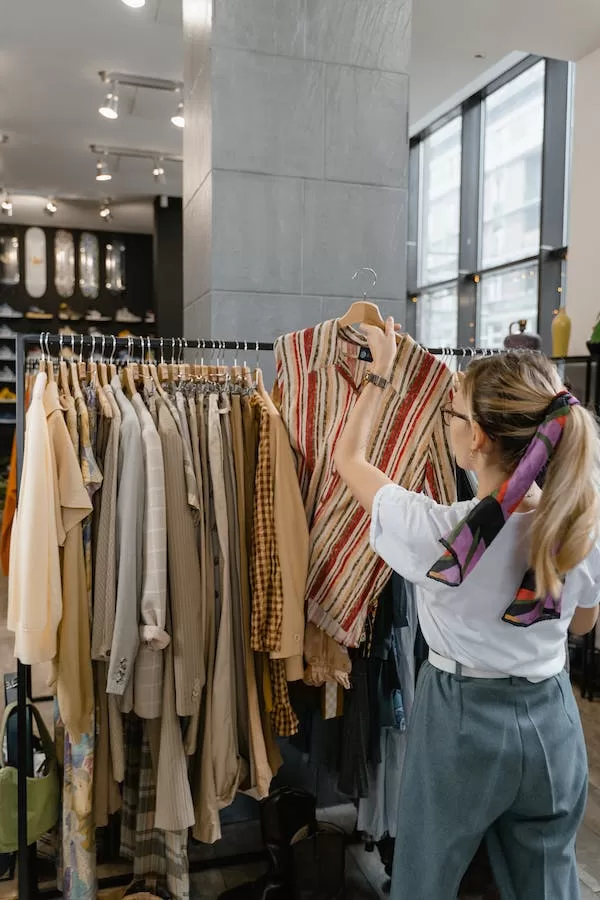Online shopping changing Retail
Introduction
There was a period when we had set locations where people might go to buy different goods, such as cement stores, men’s clothing stores, centres for women’s clothing, and so on. As the periods of the changing world changed throughout time, these businesses also evolved into modern multi-item floors with digital operational methods. Since making purchases online is now a part of the modern generation’s everyday routine, several of these stores have even closed. Recently, the retail industry has seen a significant transformation as a result of the expansion of online shopping. Customers now have unprecedented access to a broad variety of goods and services because of the advancements in technology and the rise of e-commerce platforms. This article deals with the impact of online shopping on conventional brick-and-mortar stores, consumer behaviour, and the shopping experience as a whole.
Changes in Online Shopping
The history of internet purchasing begins with the earliest e-commerce innovators. Businesses like Amazon and eBay helped to usher in a new era of retail by enabling consumers to browse and buy things online. Online retail sales have grown over time thanks to technology developments, safe payment methods, and improved logistics.

Consumers’ Changing Behaviour
The alteration of customer behaviour is one of the biggest effects of internet purchasing. E-commerce’s accessibility and ease have changed how consumers purchase. Customers may now make educated judgements from the comfort of their homes by comparing costs, reading user reviews, and other factors. To improve the shopping experience and cater to each customer’s specific demands, online businesses use targeted advertising and personalised recommendations and lay a heavier weightage to the maintenance of their market standing which exclusively lie on the customer satisfaction level gauged by the customer ratings given from time to time.

Effect on Classic Brick-and-Mortar Shops
The rise of online shopping has caused issues for traditional brick-and-mortar stores. The convenience of online buying has decreased in-person shopping and increased the rate of store closures. Physical stores have adapted by utilising digital strategies in order to stay competitive. Omni channel commerce refers to the integration of brands’ offline and online channels to provide a seamless shopping experience. Even some of the traditional old retailers have been heard bemoaning the internet selling model, complaining that it has severely impacted their profitability owing to the open announcement of several schemes and attractive attractions that the traditional old store formerly devoured entirely and solely. The current generation now enjoys a competitive advantage over the sellers because to this transparency.
The Shopping Experience Has Changed
The way people shop has been significantly changed by online purchasing. The transaction was simple, and it was possible to buy the things with only a few clicks, which made the procedure quick and easy. The buying environment has also become more diverse because to the advent of new retail models like dropshipping and subscription-based services. With the ease and cost reductions provided by online platforms, consumers now have access to an unparalleled range of goods.

Opportunities and Challenges for Retailers
For merchants, the change to internet purchasing has brought both benefits and problems. To survive in this evolving sector, conventional merchants must adjust to the digital environment. Improving customer service and in-store experiences is crucial if you want to draw in and keep consumers. Retailers may also use technology to their advantage to stay competitive. Personalised shopping experiences, virtual try-ons, and augmented reality are just a few examples of how technology may be used to give customers interesting and distinctive experiences.
The Retail Sector’s Future
Integration of physical and digital shopping experiences is key to the success of retail. While online buying is quick and easy, physical businesses still have importance in terms of immediate pleasure and sensory experiences. In order to offer a comprehensive shopping experience, businesses will likely combine online and offline channels in a seamless way in the future of retail. As customers demand eco-friendly practises and openness from merchants, sustainability and ethical issues will also be key.
Conclusion
The retail sector has undergone a fundamental change as a result of online purchasing. Consumer shopping has been completely transformed by e-commerce platforms’ ease, accessibility, and personalised experiences. In order to compete in this digital age, traditional brick-and-mortar shops have to adapt and innovate. In a world where technology and customised experiences drive consumer engagement, the future of retail is in the seamless integration of offline and online channels. Retailers need to adapt to these developments as we move forward in order to fulfil the needs of the modern customer.
